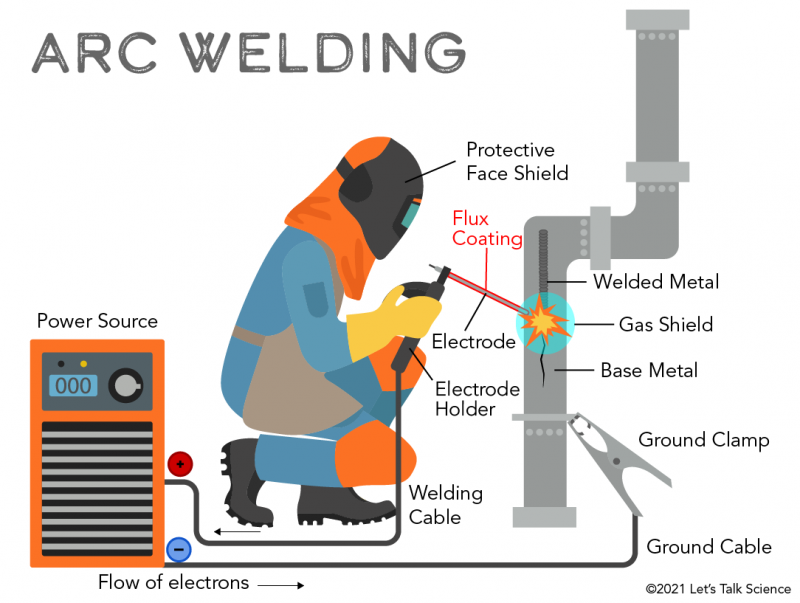Welding WPS for Beginners: Getting Going with Welding Procedure Specs
Welding WPS for Beginners: Getting Going with Welding Procedure Specs
Blog Article
The Ultimate Overview to Welding WPS Procedures: A Thorough Summary for Welders
In the intricate world of welding, Welding Procedure Requirements (WPS) work as the foundation of making sure high quality, uniformity, and safety and security in welding procedures. Understanding the nuances of creating, executing, and keeping an eye on WPS procedures is necessary for welders wanting to boost their craft and fulfill sector requirements. As we explore the different components of a WPS and discover the intricacies of credentials and certification, we will uncover the crucial role these treatments play in the world of welding. Let's start a journey to unwind the intricacies and importance of WPS procedures in welding methods.
Importance of WPS Procedures
Understanding the value of Welding Treatment Requirements (WPS) treatments is crucial for ensuring the top quality and honesty of bonded structures. WPS procedures function as a roadmap for welders, laying out the necessary actions, parameters, and products required to attain an audio weld. By adhering to WPS guidelines, welders can make certain consistency in their work, bring about structurally audio and trustworthy welds.
One of the main factors why WPS procedures are crucial is their function in preserving weld high quality and stability. Complying with the defined welding parameters and methods outlined in the WPS assists prevent defects such as porosity, splitting, or incomplete combination, which can jeopardize the stamina and resilience of the weld.

Components of a WPS
A Welding Treatment Specification (WPS) generally consists of essential parts that information the particular demands for performing a weld, making sure consistency and quality in the welding process. The vital parts of a WPS include essential variables such as base steels, filler steels, interpass and preheat temperatures, welding processes, securing gases, welding positions, and post-weld warmth treatment requirements.
Base metals refer to the materials being signed up with, while filler steels are made use of to load the void in between the base metals during welding. Preheat and interpass temperatures are vital for regulating the warmth input and stopping problems like cracking or distortion. The welding procedure outlines the particular technique to be utilized, whether it's gas metal arc welding (GMAW), protected steel arc welding (SMAW), or an additional method. Protecting gases protect the weld pool from climatic contamination. Welding placements specify the orientations in which welding can be performed. Post-weld warmth treatment might be required to soothe anxieties and enhance the weld's buildings. A detailed understanding of these parts is critical for producing a comprehensive and efficient WPS.

Certification and Accreditation
Having developed the essential parts of a Welding Treatment Spec (WPS), the focus now moves towards the critical aspects of certification and certification in welding practices.

Accreditation, on the other hand, is the formal recognition of a welder's certifications by a pertinent accreditation body or organization. Welding certifications are commonly based upon the specific welding procedures, products, and settings a welder is qualified to deal with. Holding a legitimate welding qualification shows that a welder satisfies market criteria and is qualified to perform welding jobs to the needed requirements.
Producing a WPS
To establish a Welding Treatment Spec (WPS) that satisfies sector requirements, careful factor to consider of welding procedures, products, and operational parameters is essential (welding WPS). The initial step in creating a WPS is to determine the welding process to be made use of, such as gas steel arc welding (GMAW) or secured metal arc welding (SMAW) As soon as the welding procedure is identified, the next vital element is selecting the suitable materials, taking into consideration aspects like base metal type, thickness, and joint design. Functional criteria such as welding present, voltage, traveling speed, and protecting gas composition should also be meticulously specified in the WPS.

Carrying Out and Checking WPS
Upon completing the detailed Welding Procedure Specification (WPS) that carefully details welding processes, materials, operational parameters, and quality control actions, the focus moves to properly carrying out and checking the well-known procedures. Application entails making sure that all welders included in the project recognize with the WPS and follow it carefully throughout the welding procedure. This requires providing adequate training and guidance to assure adherence to the defined procedures. Keeping an eye on the WPS involves constant oversight to validate that welding activities straighten with the documented specifications. Examinations, screening, and high quality control steps are necessary parts of the monitoring procedure to recognize any variances or concerns promptly. Normal audits and testimonials of the welding treatments aid in preserving uniformity and top quality throughout the project. Reliable implementation and monitoring of the WPS are vital for making certain the integrity, strength, and safety of the welded joints, eventually contributing to the total success of the welding job.
Final Thought
Finally, understanding and following Welding Treatment Specifications (WPS) is essential for welders to guarantee quality, uniformity, and security in their job. By recognizing the parts of a WPS, getting proper certifications and certifications, developing in-depth treatments, and executing and checking them successfully, welders can enhance their skills and effectiveness in welding techniques. Abiding by WPS treatments is necessary for generating top quality welds and conference industry criteria.
In the complex world of welding, Welding Treatment Specifications (WPS) serve as the foundation of making certain top quality, uniformity, and security in welding operations. The welding procedure lays out the particular technique to be made use of, whether it's gas metal arc welding (GMAW), secured metal arc welding (SMAW), or another method.To establish a Welding Treatment Requirements (WPS) that satisfies market standards, careful consideration of welding procedures, materials, and functional criteria is essential. The very first step in producing a WPS is to identify the welding process to be made use of, such as gas steel arc welding (GMAW) or secured metal arc welding (SMAW)Upon completing the comprehensive Welding Treatment Requirements (WPS) that carefully details welding processes, products, operational specifications, and high quality guarantee steps, the emphasis shifts to efficiently executing and monitoring the established procedures.
Report this page